What Happened to FiLMiC Pro in 2021?
In January last year, I challenged myself to make a tutorial for FiLMiC Pro which would cover every single feature of the app in one video. It was quite a project. But since then, FiLMiC has added some new stuff and the interface has changed a bit.
There’s also been some problems on Samsung phones using the new Android 12. So let’s take a look at the pros and cons of changes to FiLMiC Pro last year.
Lens Picker
The first update of 2021 was in April, I believe, when the lens picker was added.
This was the FiLMiC Pro 6.14 Update, for both iOS and Android. A quick lens picker was added to the main interface. This means you can find and switch around available cameras in your smartphone much easier. Previously, we had to go into settings, but with this it’s now just one tap to open a strip of icons and each one represents a lens.
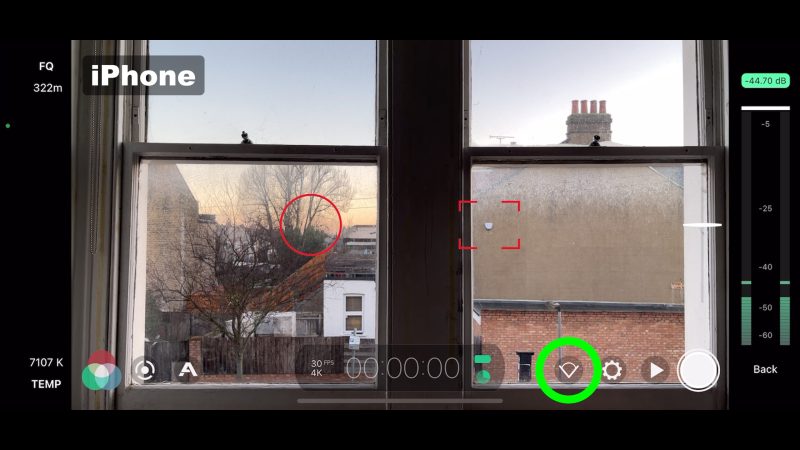
Rear facing cameras are represented by this V shape with a curved line. Front facing or selfie cameras are the people icons. On my Samsung, I have 2 selfie cameras available and the main wide. But, as these Samsung devices don’t allow manual control with the tele lens, it’s not there to choose from. On my iPhone, however, I do get a tele lens option.
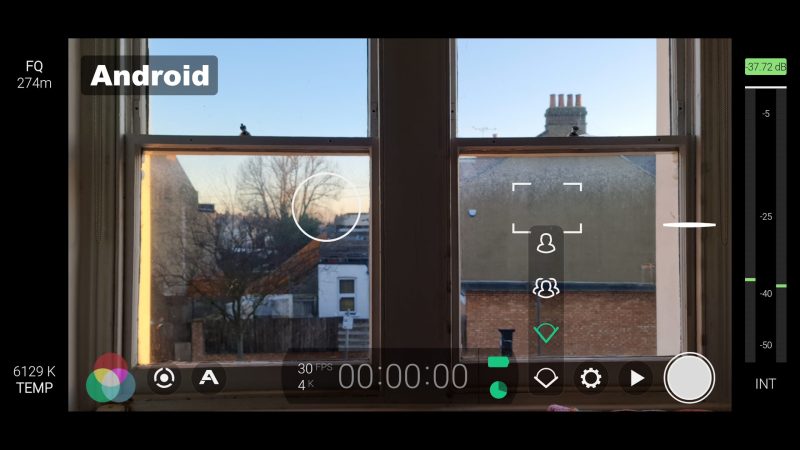
When you choose a lens, you get a little message at top telling you which lens you have selected. It’s only there for a second, though.
Note that you can’t switch lenses while recording, so when you start recording the lens picker disappears.
You can still change the camera in the settings menu. And they’ve also changed the interface here to give you more information about each lens. Also, if you have FiLMiC’s DoubleTake app you can quickly switch to it from here, as well.
Advanced CMS
Another change with this update was the Advanced CMS option. CMS stands for Content Management System. Toggle on the advanced version to access a CMS which is designed to match schemes used by pro camera setups by companies like Arri and RED.
So if you’re using footage from FiLMiC Pro in combination with footage from one of those cameras, this should help when you’re editing the footage together, later.
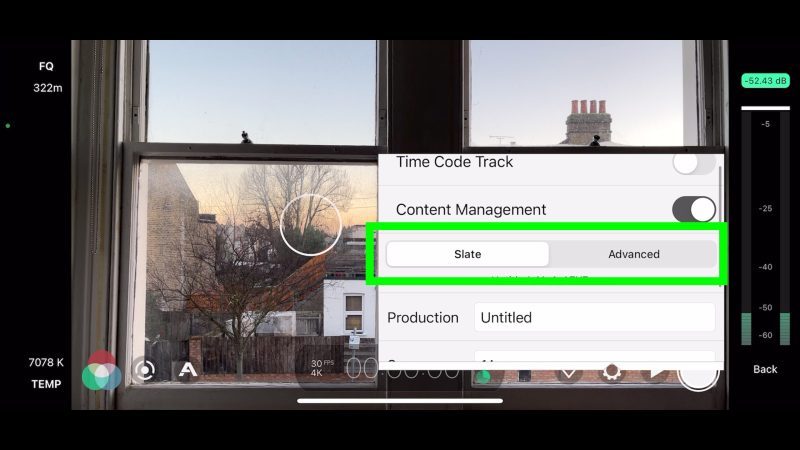
But if you’re filming using a smartphone, then you can just keep this on Slate Mode, if you want to use CMS.
In September, FiLMiC added an entire new feature called Film Looks.
Film Looks
FiLMiC’s Film Looks are an in-app purchase which add a colour filter directly to your video when you shoot it. This just gives you something quick to work with, rather than spending time grading video later.
To find them, tap the RGB symbol in the bottom left corner. Below the white balance controls you will find the film looks.
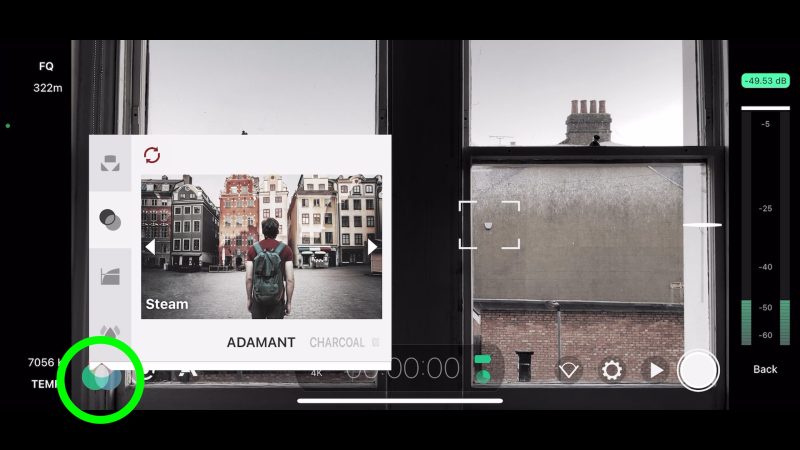
Each purchase brings you a set of 4 looks. At first there were 3 sets – Adamant, Charcoal and Novus. They’ve since added a 4th option, which is Infrared.
You can see what they look like before purchasing, but you won’t be able to record any video until you pay up. So I went and tried each look, see what you think…

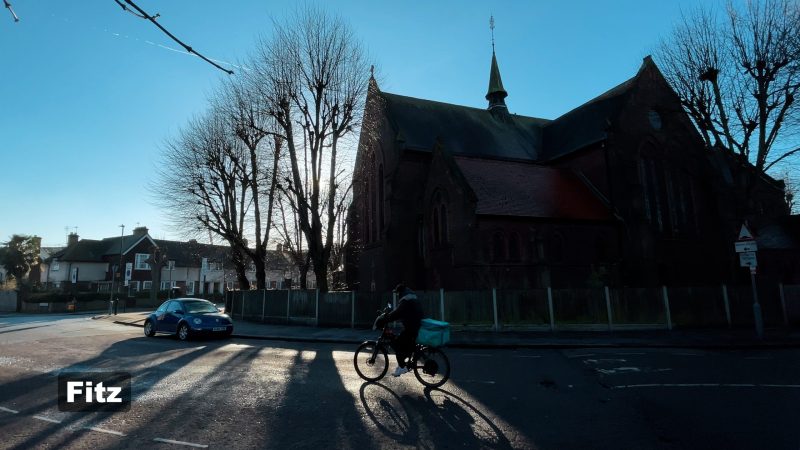
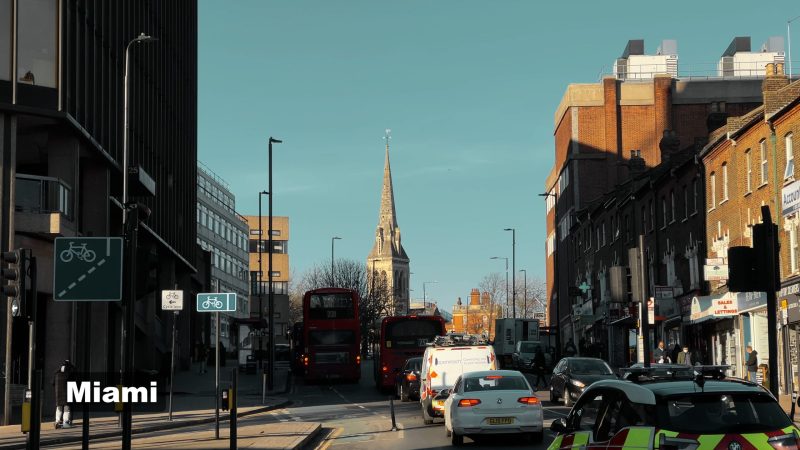

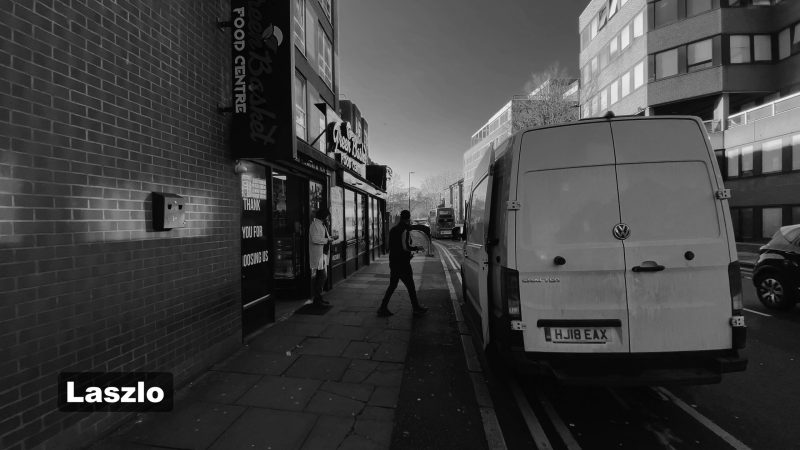







Note that you can currently only shoot 8bit and a maximum of 30fps with these looks. However, you can apply them when using the clean HDMI out, if you like to use FiLMiC Pro to stream video.
Next up, ProRes video capture.
Apple ProRes
Apple ProRes is only available using an iPhone 13 model of smartphone. On those devices, FiLMiC Pro now allows you to choose ProRes where you choose colour depth or Dolby Vision. Once you choose ProRes you get 4 different types of ProRes to choose from.
These increase in quality as well as file size as you scroll through them. The 422 part refers to the chroma subsampling, meaning ProRes only discards 50% of the colour information compared to the 75% discarded by the regular smartphone video codecs.
I don’t have an iPhone 13 so I haven’t tried it. But I’ve seen mixed opinions on the ProRes you get from an iPhone. Some love it, some think it’s not worth the extra file size, some just don’t like it.
Of course, you can always shoot ProRes using an iPhone 13 without FiLMiC Pro, as well.
So those are the main updates. I have also noticed a spruce up of the interface as well, with the introduction of these nice looking blue menus. However, there was some bad news for Samsung S21 users who also use FiLMiC Pro, as Android 12 removes support for 60fps.
“Every film project is like a puzzle. The more puzzles you complete, the more strategies you learn. These strategies are the most important kit in your bag. Because a variety of different strategies are needed for every project”. Simon Horrocks, Mobile Motion
Smartphone Video – Beginner to Advanced
If you want to know more about smartphone filmmaking, my book Smartphone Videography – Beginners to Advanced is now available to download for members on Patreon. The book is 170 pages long and covers essential smartphone filmmaking topics:
Things like how to get the perfect exposure, when to use manual control, which codecs to use, HDR, how to use frame rates, lenses, shot types, stabilisation and much more. There’s also my Exploring the Film Look Guide as well as Smartphone Colour Grading.
Members can also access all 5 episodes of our smartphone shot Silent Eye series, with accompanying screenplays and making of podcasts. There’s other materials too and I will be adding more in the future.
If you want to join me there, follow this link.
Simon Horrocks
Simon Horrocks is a screenwriter & filmmaker. His debut feature THIRD CONTACT was shot on a consumer camcorder and premiered at the BFI IMAX in 2013. His shot-on-smartphones sci-fi series SILENT EYE featured on Amazon Prime. He now runs a popular Patreon page which offers online courses for beginners, customised tips and more: www.patreon.com/SilentEye


